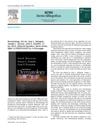
Search
for
Sort by
Research
390-420 / 771 results

research Research Highlights: Gamma Delta T Cells Regulate Hair Follicle Neogenesis During Adult Wound Healing
γδ T cells help with hair growth during wound healing in mice.

research Dermatological Drugs, Topical Agents, and Cosmetics
Tretinoin gel is safe for sun exposure, but tacalcitol doesn't significantly improve non-segmental vitiligo.

research Lgr5 Marks Cycling, Yet Long-Lived, Hair Follicle Stem Cells
Lgr5 is a marker for active, long-lasting stem cells in mouse hair follicles.

research Hair Follicle Immune Privilege Revisited: The Key to Alopecia Areata Management
Restoring hair bulb immune privilege is crucial for managing alopecia areata.

research Distribution of Extracellular Matrix Molecules in Human Hair Follicles
ECM molecules are crucial for hair growth and development.

research Acquired Scalp Alopecia: A Review
Accurate diagnosis is key for treating different kinds of hair loss, and immune response variations may affect the condition and treatment results.

research Acquired Scalp Alopecia: A Review
Early diagnosis and treatment are crucial for preventing permanent hair loss in various scalp conditions, and while new treatments are promising, more research is needed to evaluate their effectiveness.

research A Humanized Mouse Model of Hereditary 1,25-Dihydroxyvitamin D–Resistant Rickets Without Alopecia
Researchers created a mouse model of a type of rickets that does not cause hair loss.

research The Negative Regulator CXXC5: Making WNT Look a Little Less Disheveled
CXXC5 is a protein that prevents hair growth and could be a target for hair loss treatment.

research Nevus Sebaceus With Novel HRAS Sequence Variant Mutation Misdiagnosed As Alopecia Areata
A 12-year-old girl was misdiagnosed with alopecia areata but actually had a nevus sebaceus with a genetic mutation.

research Tofacitinib for the Treatment of Severe Alopecia Areata and Variants: A Retrospective Cohort Study of 90 Patients
Tofacitinib is effective and safe for treating severe alopecia areata and related conditions.

research Book Review
The reviewer recommends "Dermatology" as an essential, well-illustrated, and up-to-date resource for anyone studying or practicing in the field.

research The Nuts and Bolts of Low-Level Laser Therapy
Low-level Laser Therapy may help reduce inflammation, pain, and aid healing, but more research is needed to confirm its effectiveness and establish standard treatment guidelines.

research Self-Assembly of Dermal Papilla Cells into Inductive Spheroidal Microtissues on Poly(Ethylene-Co-Vinyl Alcohol) Membranes for Hair Follicle Regeneration
EVAL membranes help create cell structures that can regrow hair follicles.

research Fractional Photothermolysis Laser Treatment of Male Pattern Hair Loss
Laser treatment can stimulate hair growth for male pattern hair loss.

research Post-Menopausal Frontal Fibrosing Alopecia
The document concludes that post-menopausal frontal fibrosing alopecia is a poorly understood condition that does not respond well to common treatments.

research TGF-β2 Is Specifically Expressed in Human Dermal Papilla Cells and Modulates Hair Folliculogenesis
TGF-β2 plays a key role in human hair growth and development.

research Normal Fur Development and Sebum Production Depend on Fatty Acid 2-Hydroxylase Expression in Sebaceous Glands
FA2H is essential for normal fur and sebum production in mice.

research Human Hair Follicle Stem/Progenitor Cells Express Hypoxia Markers
Human hair follicle stem cells show signs of low oxygen levels, which may be important for hair growth and preventing baldness.

research An Algorithmic Approach for Reconstruction of Burn Alopecia
The study concluded that reconstructive surgery for burn alopecia should be tailored to the scar's size and quality, with different methods recommended for different cases.

research Human Umbilical Cord Blood Mesenchymal Stem Cells Engineered to Overexpress Growth Factors Accelerate Outcomes in Hair Growth
Modified stem cells from umbilical cord blood can make hair grow faster.

research Androgenic Disorders of Women: Diagnostic and Therapeutic Decision Making
The document concludes that proper diagnosis and tailored long-term treatment can effectively manage androgenic disorders in women, improving patient care outcomes.

research Autoantigen Discovery in the Hair Loss Disorder, Alopecia Areata: Implications of Post-Translational Modifications
New protein changes may be involved in the immune attack on hair follicles in alopecia areata.

research Recent Advances in Drug Design and Drug Discovery for Androgen-Dependent Diseases
New treatments for prostate cancer and BPH show promise, including novel compounds that target hormone synthesis and response.

research Polycystic Ovarian Syndrome and Associated Hirsutism in Adolescents
Early diagnosis and treatment of PCOS in teenagers can help prevent more severe adult PCOS.

research Histopathological Findings and Proliferative Activity of Canine Sebaceous Gland Tumors with a Predominant Reserve Cell Population
High proliferative activity and peripheral invasion indicate malignancy in canine sebaceous gland tumors; the term 'epithelioma' should be updated for clarity.

research Significance of Iron Status in Hair Loss in Women
Iron deficiency might contribute to hair loss in women.

research Cyclical Dermal Micro-Niche Switching Governs the Morphological Infradian Rhythm of Mouse Zigzag Hair
Mouse zigzag hair bends form due to a 3-day cycle of changes in hair progenitors and their environment.

research Pathology in Practice: Case of a 13-Year-Old Cat with Paraneoplastic Alopecia and Hepatic Malignancy
The cat had liver cancer and a related hair loss condition, with a likely cause being bile duct cancer.